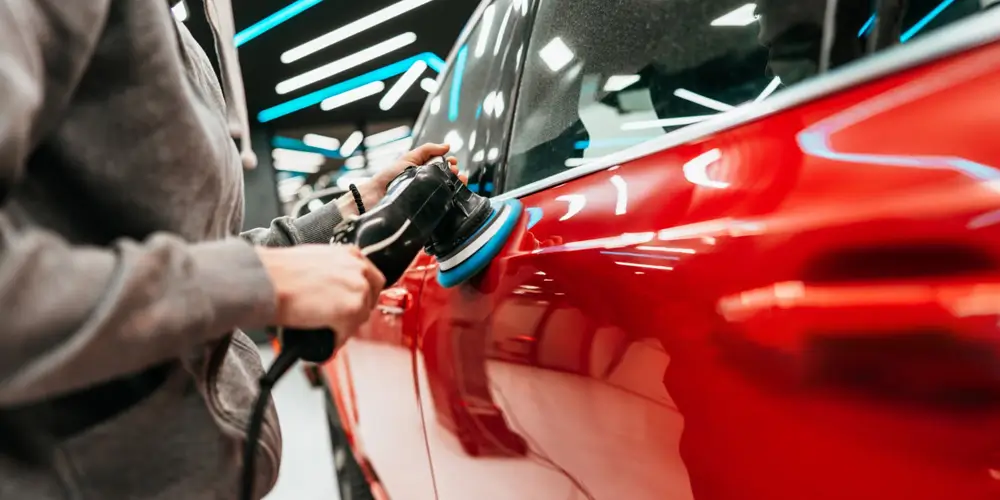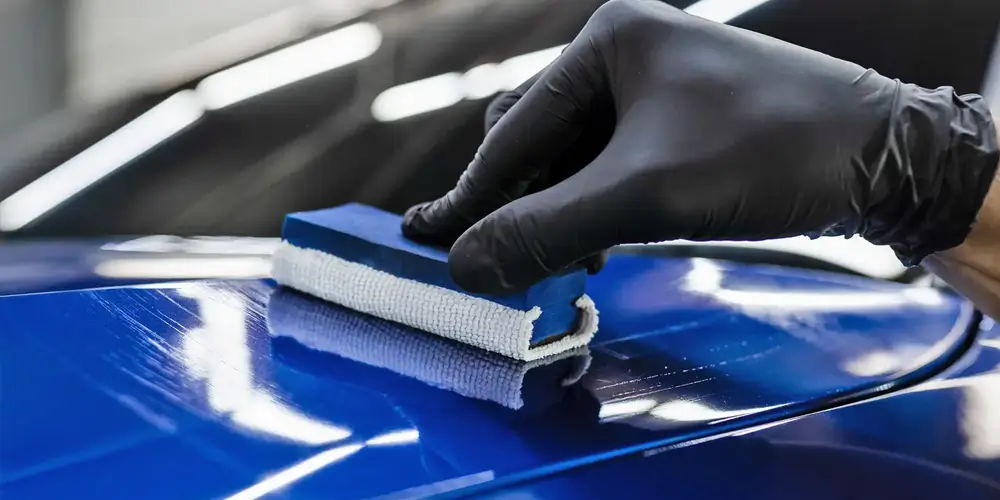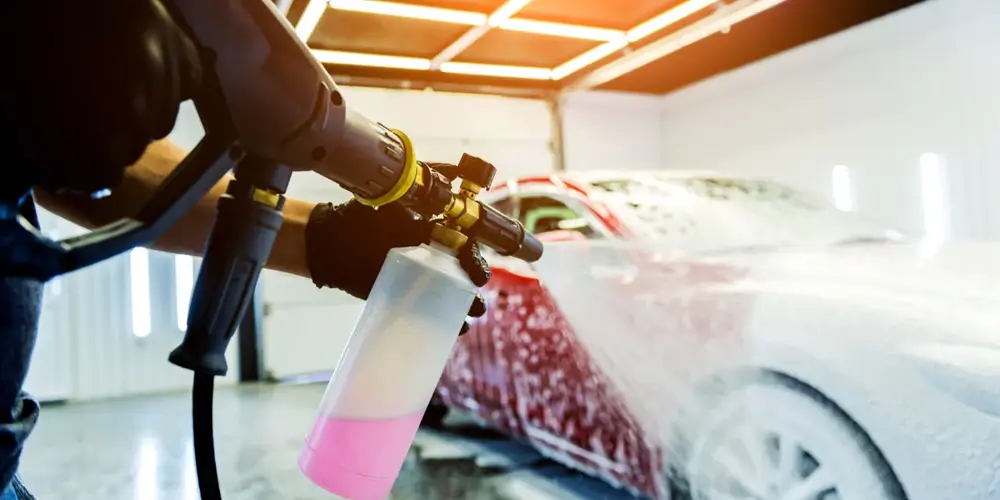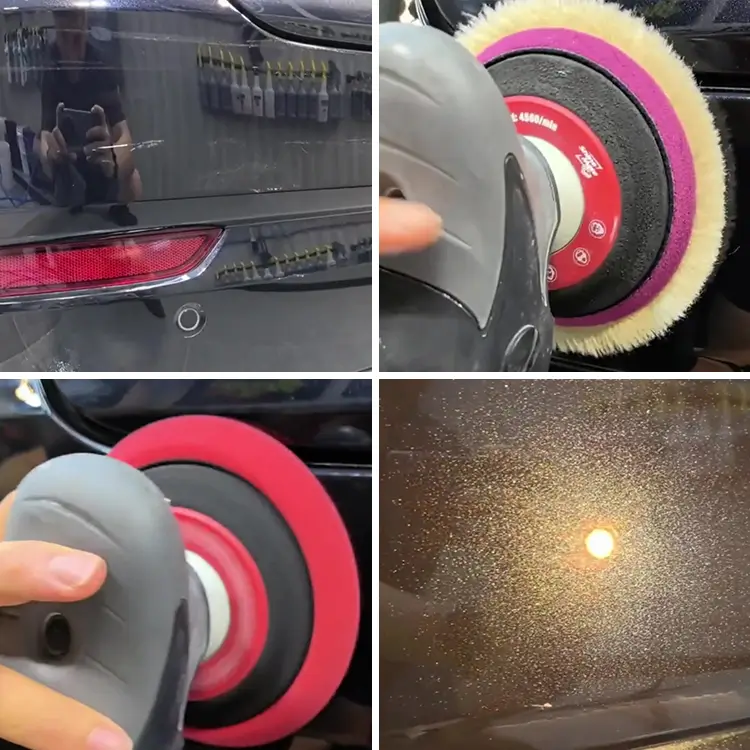The Best Polishing Compounds for Heavy Defects: A Comprehensive Guide
In the world of auto detailing, achieving a flawless finish on a vehicle’s paintwork is the ultimate goal. Whether you're an auto detailing supplier like SYBON, an importer, a car detailing shop owner, or a car repair center operator, understanding the nuances of polishing compounds can significantly impact the quality of your work. This comprehensive guide will explore the best polishing compounds for heavy defects, helping you make informed decisions for your business.
Understanding Polishing Compounds
Polishing compounds are abrasives designed to remove imperfections from a vehicle’s paint surface. These imperfections can range from minor swirl marks and scratches to severe oxidation and deep scratches. The goal of using a polishing compound is to restore the paint to its original gloss and clarity.
Polishing compounds can be categorized into three main types:
1. Heavy Cut Compounds: These are the most abrasive and are used for removing severe defects.
2. Medium Cut Compounds: These have a moderate level of abrasiveness, suitable for moderate defects.
3. Finishing Compounds: These are the least abrasive and are used for final polishing to achieve a high gloss finish.
For the purpose of this article, we will focus on heavy cut compounds, as they are essential for tackling the most challenging defects.
What to Look for in a Heavy Cut Compound
When selecting a heavy cut compound, several factors should be considered:
1. Abrasiveness: The level of abrasiveness determines how effectively the compound can remove defects. A higher abrasive level is suitable for deeper scratches and oxidation.
2. Ease of Use: Some compounds are easier to work with than others. Look for products that spread easily and can be worked for a reasonable amount of time before drying out.
3. Dusting: Excessive dust can be a problem during the polishing process. Choose compounds that minimize dust production.
4. Finish Quality: A good heavy cut compound should not only remove defects but also leave a smooth finish that requires minimal follow-up polishing.
5. Compatibility: Ensure the compound is compatible with the paint type and other detailing products you use.
Top Polishing Compounds for Heavy Defects
1. Meguiar’s Mirror Glaze M105
Overview: Meguiar’s M105 Ultra-Cut Compound is renowned for its ability to remove severe paint defects quickly. It uses advanced super-micro abrasive technology to cut through heavy defects while leaving a smooth finish.
Key Features:
- High abrasiveness for fast defect removal.
- Minimal dusting, making cleanup easier.
- Compatible with dual-action and rotary polishers.
- Can remove 1200 grit sanding marks and deeper scratches.
Usage Tips:
- Work in small sections to ensure even coverage.
- Use a heavy cutting pad for best results.
- Follow up with a finishing polish for maximum gloss.
2. SYBON Heavy Cut Compound S500
Overview: SYBON Heavy Cut Compound S500 is a versatile compound that combines high cutting power with a fine finish. It is designed to remove heavy defects such as deep scratches, oxidation, and severe swirl marks.
Key Features:
- High cutting performance with a fine finish.
- Low dusting formula.
- Suitable for all types of paint, including hard clear coats.
- Can remove 1500 grit sanding marks.
Usage Tips:
- Pair with a wool or microfiber cutting pad for maximum effectiveness.
- Use moderate pressure and work the product thoroughly.
- Finish with a fine polish to enhance gloss.
3. 3D One Hybrid Cutting Compound and Finishing Polish
Overview: 3D One is a hybrid compound that offers both cutting and finishing capabilities. It is designed to remove heavy defects while also providing a high-gloss finish, reducing the need for multiple products.
Key Features:
- Hybrid formula for cutting and finishing in one step.
- Low dusting and easy wipe-off.
- Safe for all paint types.
- Can remove 1000-1500 grit sanding marks.
Usage Tips:
- Use with a heavy cutting pad for defect removal and a finishing pad for polishing.
- Adjust pad and machine speed based on the level of defects.
- Ideal for detailers looking to streamline their process.
4. Chemical Guys V32 Optical Grade Extreme Compound
Overview: Chemical Guys V32 is an extreme cutting compound designed for heavy defect removal. It is formulated with advanced abrasives to tackle the most challenging imperfections.
Key Features:
- Extreme cutting power for severe defects.
- Optical grade abrasives for a smooth finish.
- Suitable for use with rotary and dual-action polishers.
- Can remove 1200 grit sanding marks and deeper.
Usage Tips:
- Start with a heavy cutting pad and evaluate progress.
- Use in a well-ventilated area to manage dust.
- Follow up with V34 or V36 for enhanced gloss.
5. Sonax CutMax Cutting Compound
Overview: Sonax CutMax iformance cutting compound designed for professional use. It provides excellent defect removal while minimizing dust and ensuring a high-quality finish.
Key Features:
- High abrasiveness for severe defect removal.
- Low dusting and easy wipe-off.
- Suitable for all paint types, including ceramic and scratch-resistant coatings.
- Can remove 1000-1500 grit sanding marks.
Usage Tips:
- Apply with a heavy cutting pad for best results.
- Work in small sections and use moderate pressure.
- Finish with a fine polish for maximum gloss and clarity.
Best Practices for Using Heavy Cut Compounds
To achieve the best results with heavy cut compounds, follow these best practices:
1. Proper Surface Preparation: Ensure the vehicle is thoroughly washed and decontaminated before polishing. This prevents contamination from interfering with the polishing process.
2. Test Spot: Always perform a test spot to determine the effectiveness of the compound and pad combination. This allows you to make adjustments before working on the entire vehicle.
3. Pad Selection: Use the appropriate pad for the level of defect removal required. Heavy defects often require wool or microfiber cutting pads.
4. Machine Settings: Adjust the speed and pressure of your polisher based on the severity of the defects and the type of compound used. Higher speeds and moderate pressure are typically needed for heavy defect removal.
5. Work in Sections: Divide the vehicle into manageable sections and work on one section at a time. This ensures even coverage and better results.
6. Clean Pads Regularly: Clean your pads frequently during the polishing process to remove accumulated compound and paint residue. This maintains the pad’s effectiveness and prevents marring.
7. Follow Up with Finishing Polish: After using a heavy cut compound, follow up with a finishing polish to refine the paint and achieve a high-gloss finish.
Conclusion
Choosing the best polishing compound for heavy defects is crucial for achieving outstanding results in auto detailing. Each of the compounds mentioned in this guide offers unique features and benefits, making them suitable for various scenarios and paint types. By understanding the characteristics of these compounds and following best practices, you can effectively remove severe paint defects and restore a vehicle’s paint to its original brilliance.
At SYBON, we are committed to providing high-quality auto detailing supplies to professionals in the industry. If you are an importer, car detailing shop owner, or car repair center operator, we invite you to explore our range of products and collaborate with us for your detailing needs. Visit our website and use our contact form to get in touch with us. Together, we can achieve exceptional results in the world of auto detailing.
Source of this article:https://www.sybonbest.com
Get to know us through more channels:




